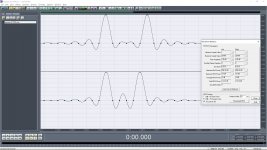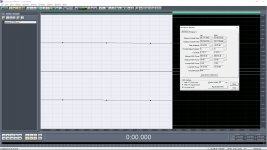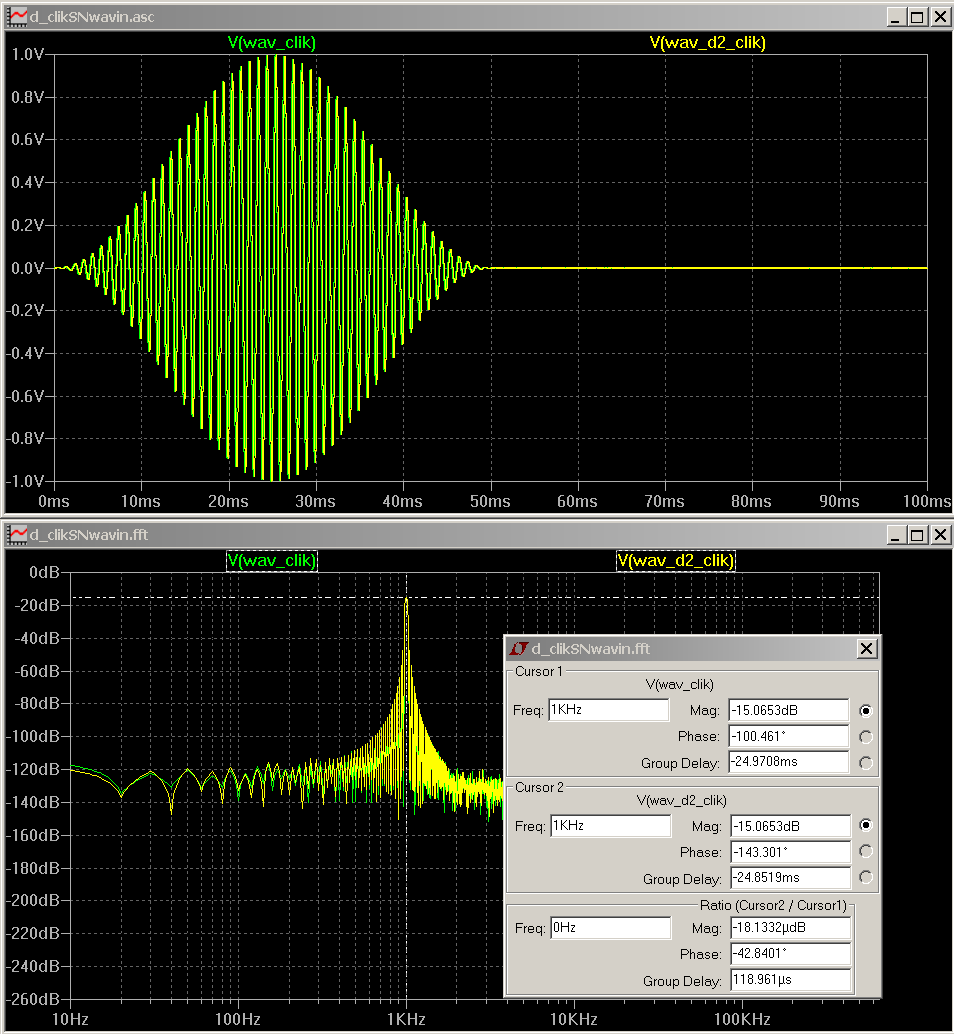more detail on how Kunchur "sorted his ABX"?
as I recall he kept saying naïve things about digital audio's ability to place "audio events" relative to each other in time - its nanoseconds at 16/44 and >80 dB dynamic range
then he created a mechanical setup that would be expected to give substantial audible errors due to radiation directivity interaction from the transducer being moved back and forth
as I recall he kept saying naïve things about digital audio's ability to place "audio events" relative to each other in time - its nanoseconds at 16/44 and >80 dB dynamic range
then he created a mechanical setup that would be expected to give substantial audible errors due to radiation directivity interaction from the transducer being moved back and forth
Last edited:
That depends on what kind of difference you are talking about.
It's not me talking about differences. It is the article's author.
dave
You were talking about "differences" and I asked you what kind differences you are referring to that's highlighted in red below.It's not me talking about differences. It is the article's author.
dave
It can only be looked at as a clever piece of satire.
The only statistical valid statement that can be made is that in the tests no differences were detected. That cannot be extended to there were no differences. The test is not that powerful.
dave
You were talking about "differences" and I asked you what kind differences you are referring to that's highlighted in red below.
I must be missing something here because Dave has explained what he's talking about about as clearly as it's possible to do so!
Best Regards,
TerryO
It can't be. And i know enuff about statistics to know how hard it is to do a proper unbiased blind test. If you want to believe Clark's tests go ahead... it is just more noise AFAIC.
What you don't seem to know that Clark's tests are for the most part my tests. We were partners "in crime". ;-) Read his AES paper and you will find my name.
Have a look at Kunchar's papers.
Been there, done that. Kunchar's false claims about digital timing are widely debunked. JCX already outlined their fatal flaw a few posts back.
I may have been the first to point out this flaw on a public forum - it was the Stereophile forum. Interesting papers. | Stereophile.com
He proved that the limit of human time perception is less than 5µs.
His test was no better than his false theories about digital. What he proved is hard to describe without the description being open to misinterpretation as an insult.
It's a very simple thing, why make it so complicated.
Making things more complex than they need to be is a well-known tactic that is part of deflection. After their logical arguments are crushed it is not uncommon for people to add unecessary complexity or deflections to conceal their loss.
There is a nearly unending list of tricks that one can use to appear to be irrefutable. One really classic one is over a century old:
http://http://www.mnei.nl/schopenhauer/38-stratagems.htm
<snip>
as I recall he kept saying naïve things about digital audio's ability to place "audio events" relative to each other in time - its nanoseconds at 16/44 and >80 dB dynamic range
Your recollection is a bit erroneous in this regard.
May i suggest rereading of his papers and his addional PDF?
What you´ve described above wasn´t written by Kunchur, but was falsely attributed to him imho due to the usual forum discussion mumbo-jumbo.
Your recollection is a bit erroneous in this regard.
Actually JCX is right on.
May i suggest rereading of his papers and his additional PDF?
Doesn't help - the gross errors in the paper can't be fixed by simply rereading it. A rewrite would be in order but that would be Kunchur admitting he was wrong...
What you´ve described above wasn´t written by Kunchur, but was falsely attributed to him imho due to the usual forum discussion mumbo-jumbo.
May i suggest rereading of his papers and his additional PDF but maybe some good texts on digital audio theory before that?
Maybe, with adequate preparation, you'll see the gross errors this time.
Let´s see:
(Source: Milind Kunchur, FAQs.PDF, Seite 1; http://boson.physics.sc.edu/~kunchur/papers/FAQs.pdf )
Last sentence emphasized by me.
For CD, the sampling period is 1/44100 ~ 23 microseconds and the Nyquist frequency fN for this is 22.05 kHz. Frequencies above fN must be removed by anti-alias/low-pass filtering to avoid aliasing. While oversampling and other techniques may be used at one stage or another, the final 44.1 kHz sampled digital data should have no content above fN. If there are two sharp peaks in sound pressure separated by 5 microseconds (which was the threshold upper bound determined in our experiments), they will merge together and the essential feature (the presence of two distinct peaks rather than one blurry blob) is destroyed. There is no ambiguity about this and no number of vertical bits or DSP can fix this. Hence the temporal resolution of the CD is inadequate for delivering the essence of the acoustic signal (2 distinct peaks). However this lack of temporal resolution regarding the acoustic signal transmission should not be confused with the coding resolution of the digitizer, which is given by 23 microseconds/2^16 = 346 picoseconds.
(Source: Milind Kunchur, FAQs.PDF, Seite 1; http://boson.physics.sc.edu/~kunchur/papers/FAQs.pdf )
Last sentence emphasized by me.
There is a nearly unending list of tricks that one can use to appear to be irrefutable. One really classic one is over a century old:
http://http://www.mnei.nl/schopenhauer/38-stratagems.htm
Oh my Lord... Why would anyone with sufficient self esteem employ such a trick...
I'm known to many friends as a type that is hard to understand. When I say something, my close friends had to think that I might not talking about what they think I'm talking about...
BUT, using unclear language or grammar or terminologies, are against my rules. Many people intentionally use such "trick" to appear more intelligent. But to me it looks like the opposite 😱
Let´s see:
kunchur said:For CD, the sampling period is 1/44100 ~ 23 microseconds and the Nyquist frequency fN for this is 22.05 kHz. Frequencies above fN must be removed by anti-alias/low-pass filtering to avoid aliasing. While oversampling and other techniques may be used at one stage or another, the final 44.1 kHz sampled digital data should have no content above fN. If there are two sharp peaks in sound pressure separated by 5 microseconds (which was the threshold upper bound determined in our experiments), they will merge together and the essential feature (the presence of two distinct peaks rather than one blurry blob) is destroyed.
(Source: Milind Kunchur, FAQs.PDF, Seite 1; http://boson.physics.sc.edu/~kunchur/papers/FAQs.pdf )
Classic example of criterial biasing. The criteria apparently chosen (is there a difference that I can readily see by some unstated means) and the relevant technical criteria (is there a difference that can be reliably discerned) are not the same criteria.
JCX and I for example appear base our judgements on whether or not there is a difference that can be reliably discerned in z 44 KHz sampled wave which conforms to general technical practice.
An illustration:
Two obviously distinct files with features < 5 uSec apart

The results of downsampling to 44 Khz, showing that while they may look the same, they are in fact still different.

To use Mr. Konchur's astronomy example the last time I looked the impulse response (PSF) of a good even 1/4 mic would preclude resolution of 5us even at 24 bits.
You must be. He hasn't given a direct answer.I must be missing something here because Dave has explained what he's talking about about as clearly as it's possible to do so!
Best Regards,
TerryO
To use Mr. Konchur's astronomy example the last time I looked the impulse response (PSF) of a good even 1/4 mic would preclude resolution of 5us even at 24 bits.
You imho completely missed Kunchur´s point, but nevertheless your screenshots illustrate perfectly what Kunchur meant
Btw, what you´ve tried is (again imho) to use no. 2 and no. 3 from Schopenhauer´s list... 😉
You imho completely missed Kunchur´s point, but nevertheless your screenshots illustrate perfectly what Kunchur meant
Btw, what you´ve tried is (again imho) to use no. 2 and no. 3 from Schopenhauer´s list... 😉
In your opinion, what was Kunchur's point?
Kunchar's false claims about digital timing are widely debunked.
They are? Where.
I do know that he has shown the same result with 2 quite different experiments and that the same result has been had by an independent 3rd party.
Certainly the tests seem to have been done with a lot more rigor than Clark's/yours.
dave
the iatd test is actually the same signals in 2 channels, each presented to R and Left ears respectively, the signals different by (microseconds) delay
so discussing, "drawing" the 2 channels of information by overlapping them in one digital channel is a bit different from the experiment
in fact differencing 2 identical signals separated by a delay is a digital filter - a differentiating/high pass filter
this misses the fact that the 2 ears separately encodes the sound at each ear into pulse trains in the tens of thousands of nerves in the and then collects both R,L auditory nerve bundles in one place and compares them
achieving few microsecond discrimination is amazing - but is explainable by correlation, which is a nonlinear process, correlation seems to be something neural nets do well
getting back to the actual digital audio signals for iatd test conditions of 2 channels it is easy to see sub sample resolution: different by microseconds delayed, nanosecond accuracy after 16/44 round trip
I've done this several times here in LTspice:
http://www.diyaudio.com/forums/everything-else/223748-time-domain-distortion-2.html#post3245634
http://www.diyaudio.com/forums/analogue-source/245555-temporal-resolution-6.html#post3697702

so discussing, "drawing" the 2 channels of information by overlapping them in one digital channel is a bit different from the experiment
in fact differencing 2 identical signals separated by a delay is a digital filter - a differentiating/high pass filter
this misses the fact that the 2 ears separately encodes the sound at each ear into pulse trains in the tens of thousands of nerves in the and then collects both R,L auditory nerve bundles in one place and compares them
achieving few microsecond discrimination is amazing - but is explainable by correlation, which is a nonlinear process, correlation seems to be something neural nets do well
getting back to the actual digital audio signals for iatd test conditions of 2 channels it is easy to see sub sample resolution: different by microseconds delayed, nanosecond accuracy after 16/44 round trip
I've done this several times here in LTspice:
http://www.diyaudio.com/forums/everything-else/223748-time-domain-distortion-2.html#post3245634
http://www.diyaudio.com/forums/analogue-source/245555-temporal-resolution-6.html#post3697702

Last edited:
They are? Where.
If you can't follow the link you have, why bother giving you another?
I do know that he has shown the same result with 2 quite different experiments and that the same result has been had by an independent 3rd party.
An invalid experiment is invalid even if consistene.
Certainly the tests seem to have been done with a lot more rigor than Clark's/yours.
Please explain.
- Home
- Member Areas
- The Lounge
- World's Best DAC's